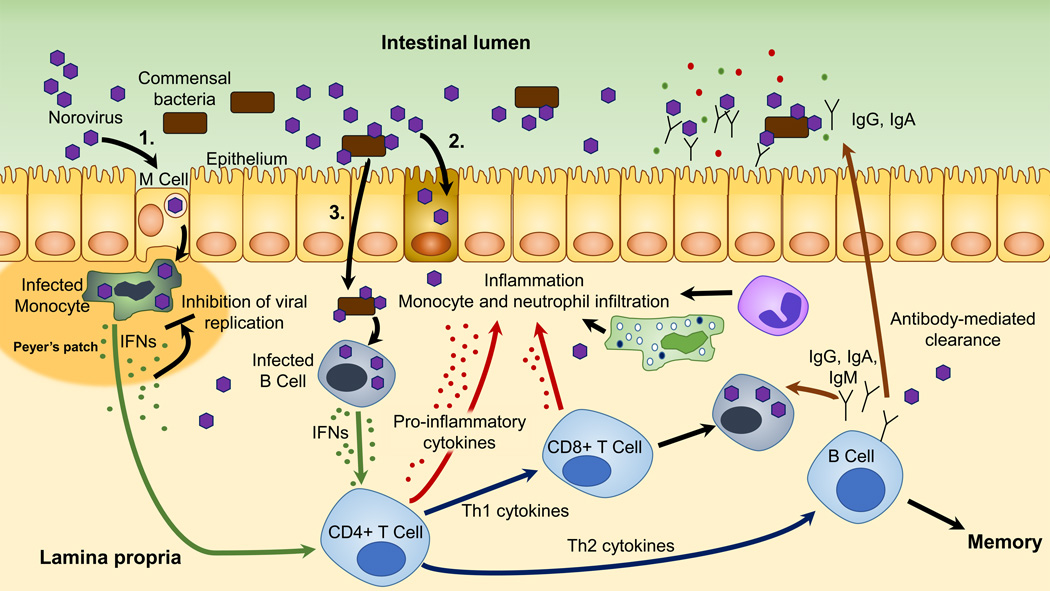Figure 1.
Proposed schematic of norovirus infection in the gut and immune response. Noroviruses (NoV) may infect multiple cell types in the gut, and this may vary between humans and animal models. Three major hypothetical infection pathways are shown. (1) NoV may infect monocytes and other cells associated with Peyer’s patches in a microfold (M) cell-dependent manner, (2) NoV may infect epithelial cells directly, or (3) NoV may be transported across the epithelium, perhaps through interactions with commensal gut bacteria, where they may infect lymphoid cells. Infected cells produce IFNs. IFNs inhibit viral replication in infected cells and may stimulate CD4+ T-cell differentiation and activation, which may lead to CD8+ T-cell activation and B-cell maturation. This schematic is not intended to make suggestions on the host location of CD4+ and CD8+ differentiation and activation following NoV infection because these data are unknown. Cytokines may lead to inflammation of the gut epithelium and recruitment of neutrophils and monocytes. B cells produce NoV-specific antibodies that are critical for clearing the infection. NoV infection also generates memory B cells, which may protect against future infection by the same strain.

